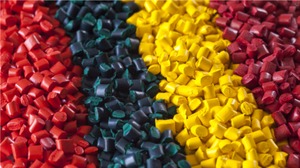Plastic injection molding offers nearly unparalleled versatility and quality in manufacturing. The ubiquitous nature of the process means that it’s rarely a challenge to find an injection molding manufacturing partner, whether for tooling or for the process itself — another quality that makes injection molding a popular choice for products (though finding the right manufacturing partner is a different story). The cost of a plastic injection mold can, however, often stop entrepreneurs and engineers in their tracks as they experience a bit of “sticker shock,” especially if they’re unfamiliar with the process.
The good news comes on a couple of fronts:
- First, knowing the factors that influence injection mold tool cost can help you manage and even lower that cost, with relatively little effort on your part.
- Second, knowing how those factors affect the molding process itself can give you better peace of mind that your upfront investment in production of a mold, injection molding setup costs, machine time and so on will pay dividends in a lower cost of production per part, and a more efficient manufacturing process.
Let’s work through some of those factors here. Remember that some of these points make a difference in the cost of creating the mold itself, and some have more of an effect on savings in the production process. We’ll be sure to point out which is which.
- Complexity of your part: Remember that creating an injection mold is a manufacturing process in and of itself. The more complex your part is, the more time the mold will take to create. Greater precision is required to ensure the integrity of the mold and your part, and a good mold manufacturer will work with you to optimize flow rate, cooling time and other important aspects of the molding process (which can affect your per-part cost later). All of these steps are important, but they all require more time and effort, which adds up to a higher production cost for you. Whenever possible, keep your injection molded part designs as simple as you can.
- Size of your part: Larger parts require larger molds, which in turn require more material and more time in creation. Hand in hand with the manufacturing of a larger mold are associated costs, especially if the mold is created somewhere other than the facility that will be producing your parts. Shipping a mold can be expensive due to its weight and the caution necessary in handling it. Also keep in mind that in general, you — not another manufacturer — own your mold. Depending on the outcome of your production and sourcing process, you may end up needing to ship your mold off site or to your own facility. All of these costs can add up for larger, heavier molds.

- Your mold material: Tool steel is commonly seen as the “gold” standard for injection mold material: It’s high-quality, resilient, typically long-lasting and suitable for a broad range of different plastic molding materials. It’s also one of the most costly mold materials you can choose. Depending on the material you intend to produce your product with, your expected production quantity, your required cycle and order turnaround time, and a number of other factors, you may be able to select a different, less-expensive material for your mold — especially for lower production runs. Keep your overall costs in mind (like mold maintenance or replacement molds), but make sure to research your options.
- Following part and mold design best practices: When it comes to manufacturability, one product or mold could potentially be designed 100 ways. There might not be a “best” way, but there are certainly better ways than others, and that’s where best practices for both product and mold design come in — as well as their effects on mold and production costs. As mentioned above, simpler geometries lend themselves to more efficient, lower-cost mold production. Simpler parts can also reduce cycle time and cooling time, incrementally reducing your machine time and those associated costs. Parts designed according to best practices are also less likely to fail or be rejected, which further reduces your overall, associated expenditure. What’s more, just as with your product itself, proper placement and management of runners, gates/sprues, ejectors and so on, within the mold, can make for a more efficient and successful production process — and lower wasted costs.
- Mold efficiency: In a nutshell, this means looking ahead and getting the most out of your mold. Suppose your product is a simple, egg-shaped plastic piece, and your initial production run calls for 50,000 parts. Can you imagine how long producing those parts one at a time would take? By utilizing an experienced and efficient mold designer, you can have a mold created that can produce several (or many) pieces in one machine cycle. Your overall production (and machine) time will be much lower, and your process will be astronomically more efficient — all of which means a lower overall production cost for you. We discussed the benefits and drawbacks of larger or smaller molds earlier, so be sure to weigh how your costs will be affected by all of these factors. A bit of simple math can help you find the “sweet spot” to optimize your investment.

- Mold manufacturer location: This point was also alluded to while investigating the ways that mold size can impact your overall injection molding costs. An off-site mold manufacturer (separate from your production supplier) will require additional shipping and handling costs to get your mold where it needs to be. The location of this manufacturer plays a major role in just what those costs will end up being. How far will your mold need to travel? Will it require surface shipping from overseas? Lower upfront costs can run up big bills for associated expenditure, whether on the shipping front or with regards to mold quality. A well-designed mold won’t come cheaply, but it will pay for itself with the high performance you expect. As always in manufacturing, lower costs must have some way of paying themselves back to the supplier. Be sure that it’s not at the expense of your product.
With these points in mind, you’re prepared to ask the right questions and manage the cost of your plastic injection mold, as well as your production costs overall.





